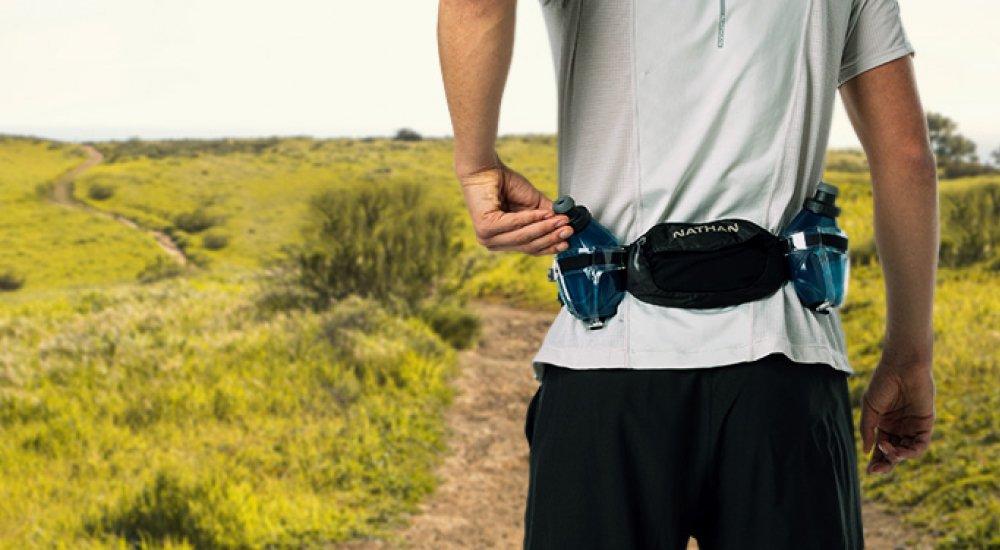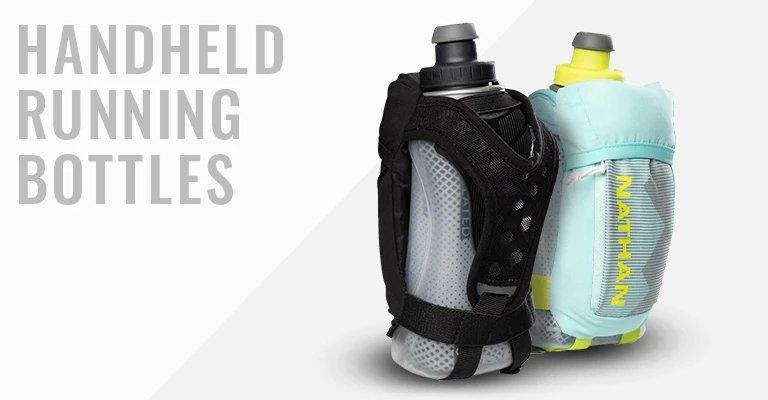How to Carry Water While Running

Transitioning from shorter to longer distances when running can bring up a variety of different questions including how to carry water on your run. Whether you're a beginning runner, running only a few miles, to full-on marathoners and ultra-marathoners, running without water in hot temperatures can be tough without access to water. Since planning a 16+ mile route with plenty of water fountains can be nearly impossible, many long-distance runners choose to carry their own water on the run.
There are four different ways to carry water while running: a handheld running water bottle, a running water bottle belt, a running water backpack, and a running water vest. The best option is up to you—what’s most comfortable, how far you’re running, the temperature outdoors, and other essentials you need to stash. We’ll break down the benefits and drawbacks of each way to carry water so you’re able to make the best decision to match your hydration needs on your next run.
1. Handheld Running Water Bottle
For short to mid-distance runs in hot weather, carrying a handheld running water bottle is a great choice. Designed to feel comfortable in your hand and featuring a strap for tightening, runners don’t have to worry about exerting additional energy to grip the bottle.
Pros:
-
Insulated to keep water cooler
-
Easy to drink even while running
-
Zippered pocket for phone or keys
Cons:
-
Smaller size doesn’t make it ideal for long runs
-
Can cause misalignment to the upper body and fatigue

2. Running Water Bottle Belt
A running water bottle belt is ideal for those who plan to run for an hour or more and need a bit more water compared to a handheld running water bottle. Most running water bottle belts include two holsters and bottles so you can use one for water and the other for an electrolyte drink.
Pros:
-
Keeps your hands-free
-
Storage for phone, keys, and fuel
-
Usually includes 2 bottles—one for water, the other for an electrolyte drink
Cons:
-
Can cause chafing if not secured properly
-
Hard to get bottles out when running, need to stop to drink

3. Running Water Backpack
Among ultrarunners, a running water backpack is a popular way to carry water. With the ability to carry up to three liters of water, you’ll have plenty of hydration when logging in all those miles. Plus, a backpack offers storage for additional layers and other must-haves when running 18+ miles.
Pros:
-
Ability to carry a lot of water
-
Easy to drink from valve when running
-
Plenty of storage space for food and clothing
Cons:
-
Added weight
-
Fabric can cause chafing around the arms
-
Only carry one type of drink in hydration pouch
-
Difficult to clean hydration pouch, hose, and valve

4. Running Water Vest
A running water vest is designed specifically for running to reduce the risk of chafing compared to a hydration pack. Unlike a pack, you’ll carry most of the weight in the front with two water bottles on either side of your chest. This allows you to carry multiple hydration options as well as experience less bouncing compared to a backpack.
Pros:
-
Designed specifically for running
-
Multiple hydration options for electrolytes and water
Cons:
-
Some additional weight
-
Less storage compared to a pack
-
Not easy to drink while running, need to stop

The best way to carry water when running really comes down to the distance and your personal preference. If you have additional questions about running, stop by your local SCHEELS to speak with a Fitness Expert today!
![[object Object]](https://res.cloudinary.com/dlwdq84ig/image/upload/w_3840,q_auto,c_scale/x1qgcm5jcooqwptm0kbq)